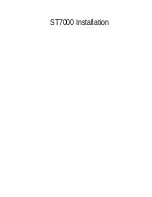
36
37
|
INSTRUCTIONS FOR USE
INSTRUCTIONS FOR USE
|
GB
GB
PURPOSE INTENDED
The
Reader Unit for SENSOR RESERVOIR
is
used for pressure-based control function.
SAFE HANDLING
Caution: Risk of contamination if the Reader
Unit or antenna is not used correctly in the
surgical environment!
Caution with sterile and non-sterile areas.
Caution: Risk of injury due to incorrect ope-
ration of the product! Attend appropriate
product training before using the product.
For information regarding such training,
please contact:
Christoph Miethke GmbH & Co. KG.
· Clean the new product thoroughly after re-
moving from the transport packaging, see
Chapter Manual Cleaning/Disinfection.
· To prevent nosocomial infection and multi-
drug resistance, the instrument should be
disinfected after each use. Disinfection is
carried out preferably by wiping. See chapter
cleaning / disinfection section disinfectant
· Ensure that the product is in perfect conditi-
on and fully functional prior to use, see Chap-
ter Inspection.
· To prevent damage as a result of incorrect
installation or operation, and in order not to
compromise warranty and manu-facturer li-
ability:
· Use the product only as specified in these
instructions for use.
· Observe all safety information and mainte-
nance instructions.
· Use only Miethke products in combination,
see Chapter Reader Unit System Compon-
ents.
· Ensure that the product and its acces-
sories are operated and used only by
persons with the requisite training, know-
ledge, or experience.
· Keep the instructions for use accessible to
the user.
PRODUCT DESCRIPTION
System components:
Reader Unit Set for
SENSOR RESERVOIR
die
SENSOR PRECHAMBER
Description
Product no.
Reader Unit Set for
SENSOR RESERVOIR
SENSOR PRECHAMBER
75020000
Antenna
Reader Unit Set for
SENSOR RESERVOIR
SENSOR PRECHAMBER
75030000
Power supply
Reader
Unit Set for
SENSOR RESERVOIR
SENSOR PRECHAMBER
75040000
INTENDED USE
The Reader Unit is used together with the
telemetric SENSOR-RESERVOIR in shunt
function diagnostic tests and permits reli-
able and non-invasive detection and loca-
lization of occlusions in ventricular draina-
ge systems (with no intervention or X-ray
diagnostics) as well as identification of mecha-
nical damage to shunt valves.
INDICATIONS
· Functional diagnosis of implanted ventricular
drainage systems (shunts)
· Detection and localization of occlusions in
ventricular drainage sys-tems
· Checking of shunt valve function
CONTRAINDICATIONS
· Intracranial pressure measurement
· Intracranial pressure management based on
measured values
· Intracranial pressure measurement without
shunt
· Functional diagnosis of extracorporeal liquor
drainage systems (trau-matic brain injury)
Fig. 1: The working distance for telemetric data trans-
fer, i.e. the distance between antenna and SENSOR
RESERVOIR is 10-30 mm, see Fig. 1.
OPERATING PRINCIPLE
The telemetric system is used to measu-
re liquor pressure levels, the characteristics
or relative time-dependent modification of
which permit conclusions to be made regar-
ding the function of an implanted ventricular
drainage system. Diagnostic methods can be
used to provoke and subsequently interpret a
change in the level of pressure in the shunt.
Using the Reader Unit, the data measured
by the shunt sensor can be retrieved and
displayed. The measured data are saved
automatically on the SD-card and can thus be
analyzed at a later point. Based on the relative
course of theliquor pressure in the shunt, con-
clusions can be drawn as to its function. As a
result, it is possible to identify and localize any
occlusion in the shunt as well as a loss of me-
chanical function in the shunt valves using non-
invasive methods.
Summary of Contents for 75020000
Page 32: ......















































